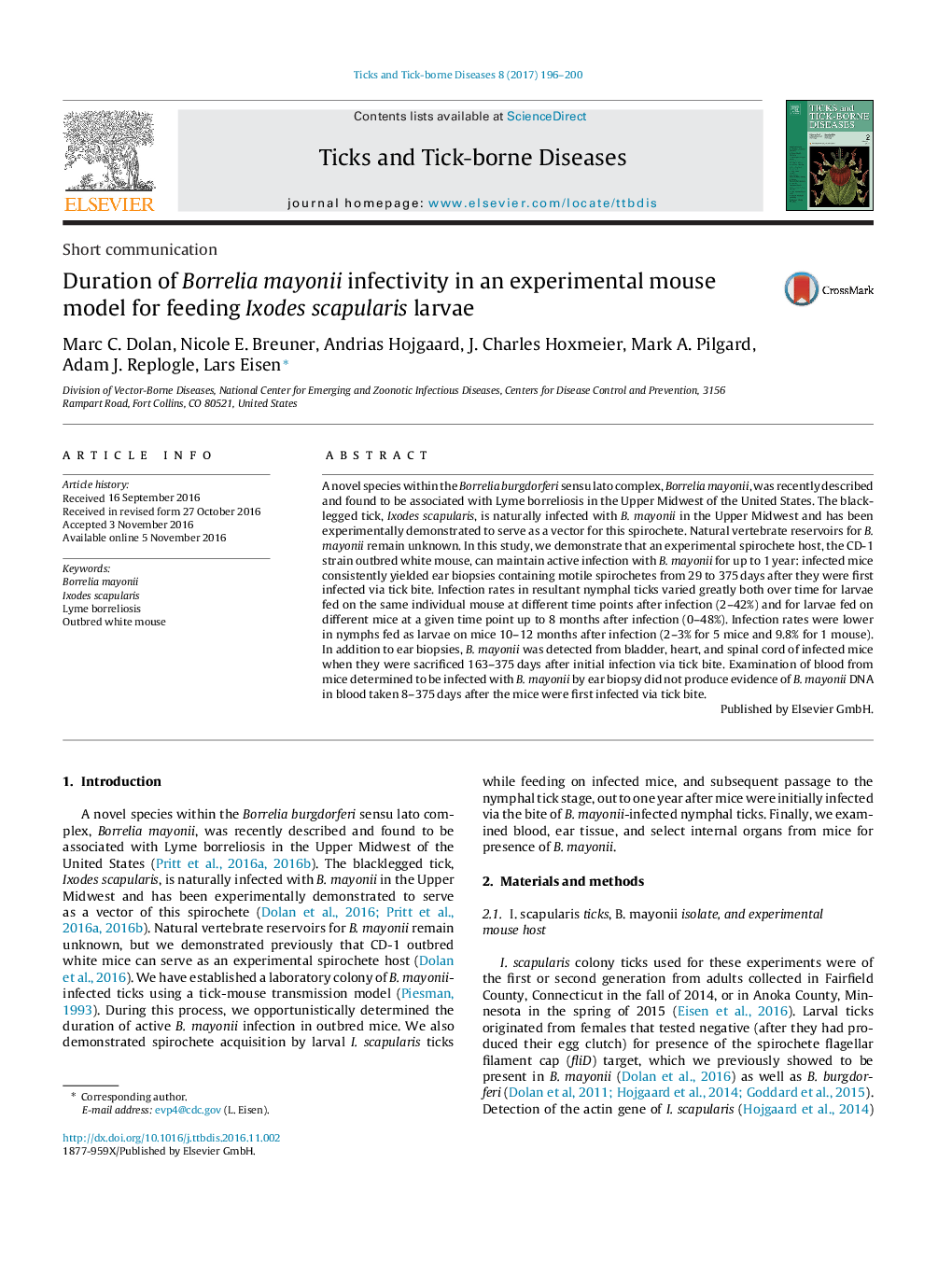| Article ID | Journal | Published Year | Pages | File Type |
|---|---|---|---|---|
| 5546465 | Ticks and Tick-borne Diseases | 2017 | 5 Pages |
A novel species within the Borrelia burgdorferi sensu lato complex, Borrelia mayonii, was recently described and found to be associated with Lyme borreliosis in the Upper Midwest of the United States. The blacklegged tick, Ixodes scapularis, is naturally infected with B. mayonii in the Upper Midwest and has been experimentally demonstrated to serve as a vector for this spirochete. Natural vertebrate reservoirs for B. mayonii remain unknown. In this study, we demonstrate that an experimental spirochete host, the CD-1 strain outbred white mouse, can maintain active infection with B. mayonii for up to 1Â year: infected mice consistently yielded ear biopsies containing motile spirochetes from 29 to 375Â days after they were first infected via tick bite. Infection rates in resultant nymphal ticks varied greatly both over time for larvae fed on the same individual mouse at different time points after infection (2-42%) and for larvae fed on different mice at a given time point up to 8 months after infection (0-48%). Infection rates were lower in nymphs fed as larvae on mice 10-12 months after infection (2-3% for 5 mice and 9.8% for 1 mouse). In addition to ear biopsies, B. mayonii was detected from bladder, heart, and spinal cord of infected mice when they were sacrificed 163-375Â days after initial infection via tick bite. Examination of blood from mice determined to be infected with B. mayonii by ear biopsy did not produce evidence of B. mayonii DNA in blood taken 8-375Â days after the mice were first infected via tick bite.
